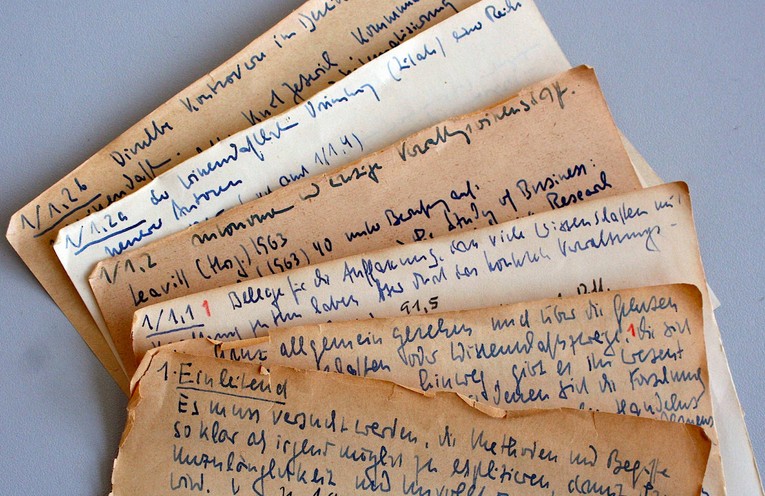The Zettelkasten is a way of connecting old ideas to create new ones.
I discovered the Zettelkasten method a few years ago, and it’s something that’s truly excited me. Simply put, it’s a way of connecting old ideas to create new ones. And you can do this online (via a free app like Obsidian), or as an analogue collection of physical cue cards. It’s a workflow you’ll use when reading, listening to podcasts, watching YouTube videos — basically anywhere you come across an interesting idea you want to work on/with in future.
Step 1: Split up concepts into the smallest possible ideas, recording these on cue cards.
Zettelkasten means note box — so cue cards (either physical or virtual) called zettelns lie at the centre of everything. Specifically, each cue card holds a single idea that you’re interested in capturing. And keeping it as a single idea is key. For example, if you’re exploring the topic of meditation, you’d have separate cards for (1) tracking your breath, (2) observing thoughts, (3) sitting appropriately, etc.
Step 2. Use your cue cards to uncover topics from the ground up.
Separating individual ideas helps with the next step. Which is to create ground-up categories for ideas attached to similar topics. So, you might have a card talking about how breathing is so important in yoga. And you might have another card from the field of medicine, describing the physiological functioning of the lungs. These cards come from different disciplines (I.e., meditation and physiology) — but the zettelns transcend these boundaries. It’s why we call the process bottom-up. We start with simple, individual ideas and build them up to a larger category.
(In contrast, a top-down approach creates categories first and then assigns new ideas to each. For example, you’d choose topics like physics, chemistry, biology, philosophy, art, etc. These are individual silos that trap ideas within them. In contrast, your Zettelkasten might have topics like The Meaning Of Life; Comedy; Sharing Ideas, etc., that draw from multiple top-down fields like philosophy, art, and more.)
Step 3: Interconnect cards that aren’t in the same topic/discipline.
Creating higher-level categories already helps us gather discrete ideas from different disciplines. But the real power of the Zettelkasten comes from connecting cards across categories. To use our breathing example, yoga breathing and physiological breathing are in the same category. But maybe yoga is connected to mindfulness — which is not connected to physiological breathing. So, now we have a connection that goes beyond categories. That’s the power of zettelns. They let you create a web of old ideas loosely arranged. Ideas you can use to create new, exciting ones. And you can use these new ideas to write essays, give speeches, or just deepen your thinking.
To get an idea of what a Zettelkasten might look like, check out the one I’m working on.
I’m no pro, but I’m a passionate learner. Here’s a brief overview of my Zettelkasten. Please excuse the plastic box. I’m still on the lookout for a more distinguished wooden one — but I’m a minimalist and frugalist, which makes me put off actually looking for one.
